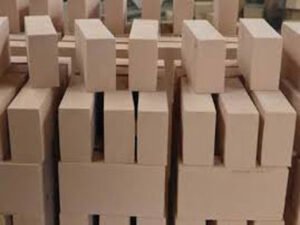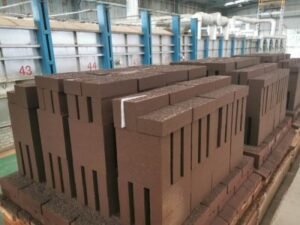Refractory materials, as the name implies, are a kind of refractory materials. Strictly speaking, the application of refractory materials is very extensive, especially in the field of industrial production. At present, many industrial productions require high-temperature technology as support, which is what we commonly call high-temperature kiln sintering. However, with the popularization and market recognition of refractory materials in recent years, refractory materials have been involved in life, medicine, people’s livelihood and many other fields related to our production and life.

According to the application in different fields, refractory products can also be subdivided into many categories, such as refractory temperature, acid and alkali combustion environment, high corrosion environment application, high erosion environment application, etc. The refractory materials required for these application scenarios are closely related to their properties. Do you know what these properties represent?
1. What is the porosity of refractory materials?
In short, porosity is an important indicator to measure the number of pores in refractories.
In the production process of refractory materials, three main forms of pores are formed: open pores, closed pores and through pores. These pores play a key role in the structure and performance of refractories.
Specifically, apparent porosity refers to the ratio of the volume of pores (i.e., open pores) in refractories that are connected to the atmosphere to the total volume. The level of this ratio directly affects important properties of refractory materials such as air permeability and thermal insulation.
The true porosity is a more comprehensive concept, which covers the ratio of the volume of all pores in refractories (including the volume of open pores, closed pores and through pores) to the total volume. The size of the true porosity is of vital importance for evaluating the overall quality, density and stability of refractories in high temperature environments.
2. What is the permeability of refractories?
Permeability is a characteristic value that characterizes the difficulty of a certain amount of gas passing through a refractory product under specific conditions. It is defined as: the number of refractory samples of a certain section and thickness that a certain pressure of gas passes through within a certain period of time.
Except for the permeable bricks of the ladle, the smaller the permeability of the remaining refractories, the better, which can reduce the erosion rate of the slag and reduce the thermal conductivity of the refractory materials.
3. What is thermal expansion of refractories?
During the use of refractories, as the temperature rises, the anharmonic vibration of atoms between the main crystal phase and the matrix of the refractory material increases the atomic spacing in the object, thereby causing volume expansion, which is called thermal expansion of refractories.
The thermal expansion of refractories is usually expressed by linear expansion rate and linear expansion coefficient. They are defined as:
(1) Linear expansion rate. The relative change rate of the length of the refractory sample during the heating from room temperature to the test temperature.
(2) Linear expansion coefficient. The relative change rate of the length of the refractory sample for every 1°C increase in temperature during the heating from room temperature to the test temperature
The thermal expansion of refractory materials is related to the crystal structure of the refractory materials. The bond energy of the crystal formed in the crystal structure determines the thermal expansion coefficient. For example, in the crystal structure of MgO and Al2O3, oxygen ions are tightly stacked. After the refractory material is heated, the mutual thermal vibration of the oxygen ions causes the thermal expansion rate of the refractories to be larger. Refractory materials with highly anisotropic structures have lower thermal expansion rates, and cordierite is a typical example.
The thermal expansion of refractory materials is related to the safe use performance during the steelmaking process. For example, refractory materials with poor thermal expansion performance will expand and crack during the baking stage of use, causing damage to the refractories; cracks during use are also an important factor affecting the smooth implementation of steelmaking.
4. What is the thermal conductivity of refractory materials?
When using refractories, there is an important physical property that must be mentioned, that is, thermal conductivity. So, what is the thermal conductivity of refractory materials? Simply put, thermal conductivity is an indicator to measure the thermal conductivity of a material. It indicates the amount of heat passing through a unit vertical volume per unit time under a unit temperature gradient. This indicator is particularly important for refractory materials because it is directly related to the use effect of the material in a high temperature environment.
Thermal conductivity is closely related to the porosity and mineral composition of refractory products. Generally speaking, the pores in refractory materials are filled with gases, and the thermal conductivity of these gases is usually very low. Therefore, we can understand why refractories with larger porosity have relatively low thermal conductivity. This is because the gas in the pores effectively hinders the transfer of heat, causing the overall thermal conductivity of the material to decrease.
In addition to porosity, the mineral composition of refractories also affects their thermal conductivity. In the mineral composition of refractories, if the crystal structure is more complex, the thermal conductivity of the material tends to be lower. This is because the complex crystal structure will hinder the heat transfer path, thereby reducing the thermal conductivity of the material. Similarly, if there are more impurities in the refractory material, its thermal conductivity will also decrease accordingly. This is because the impurities will destroy the crystal structure of the material and further hinder the transfer of heat.

